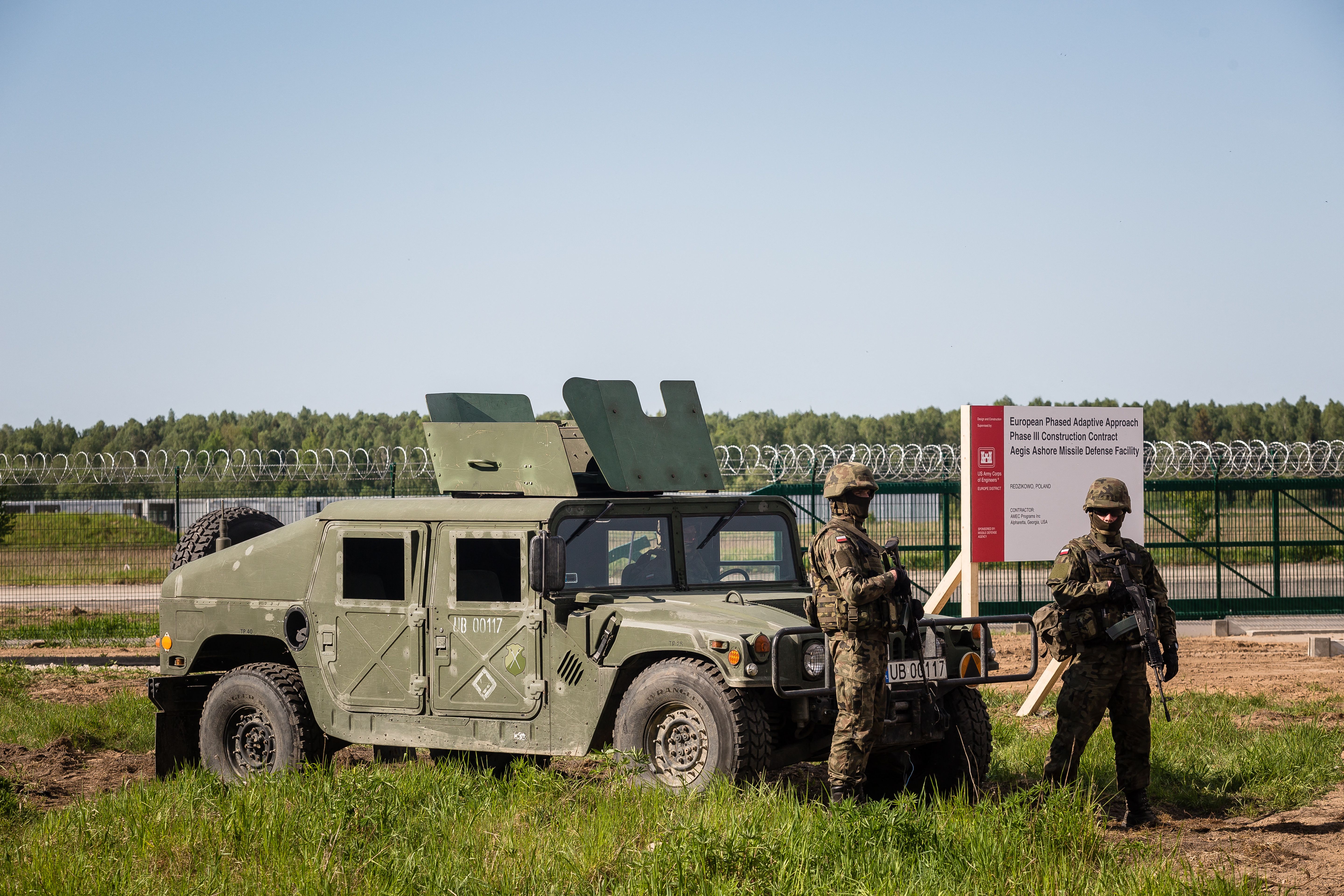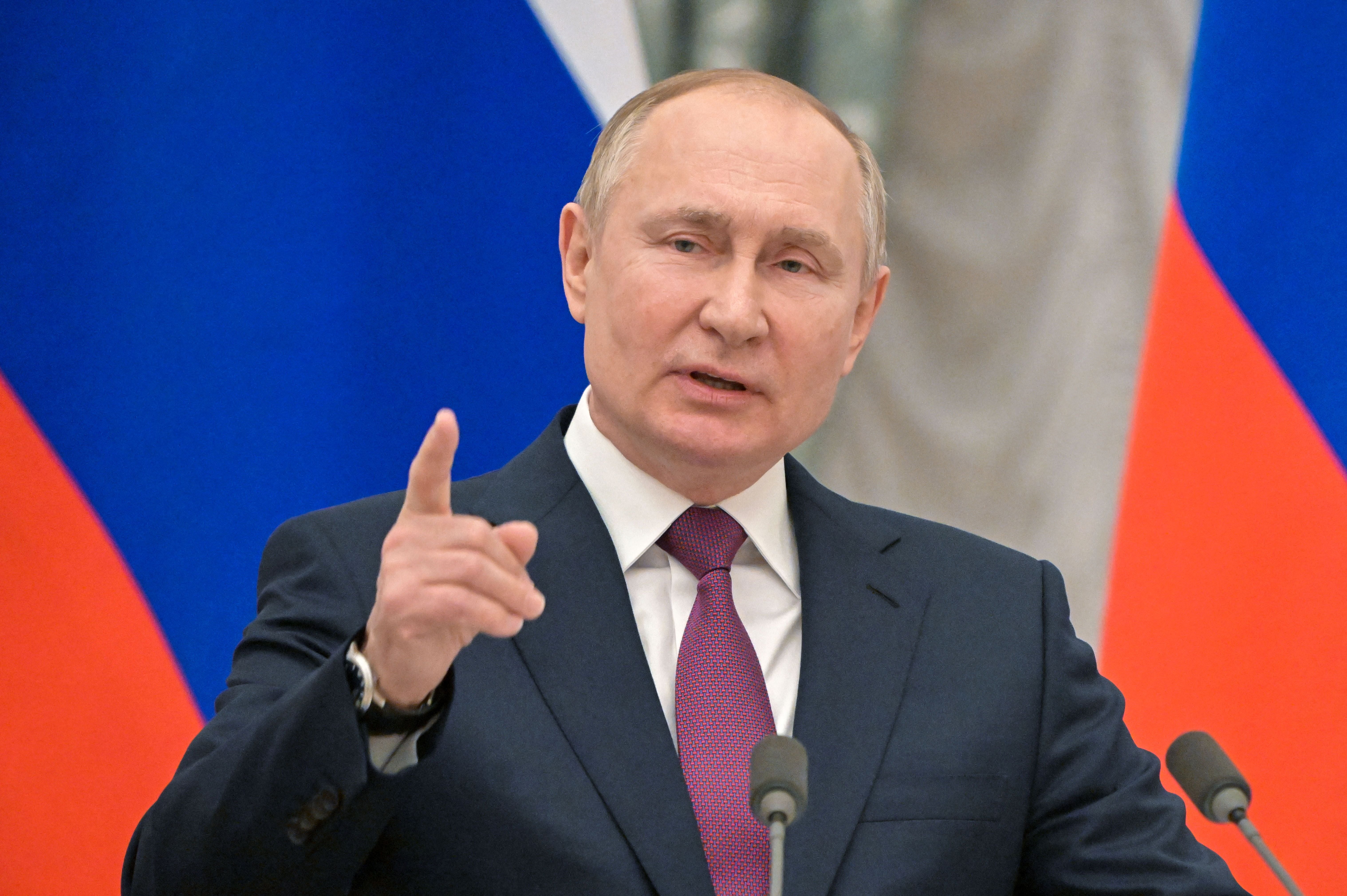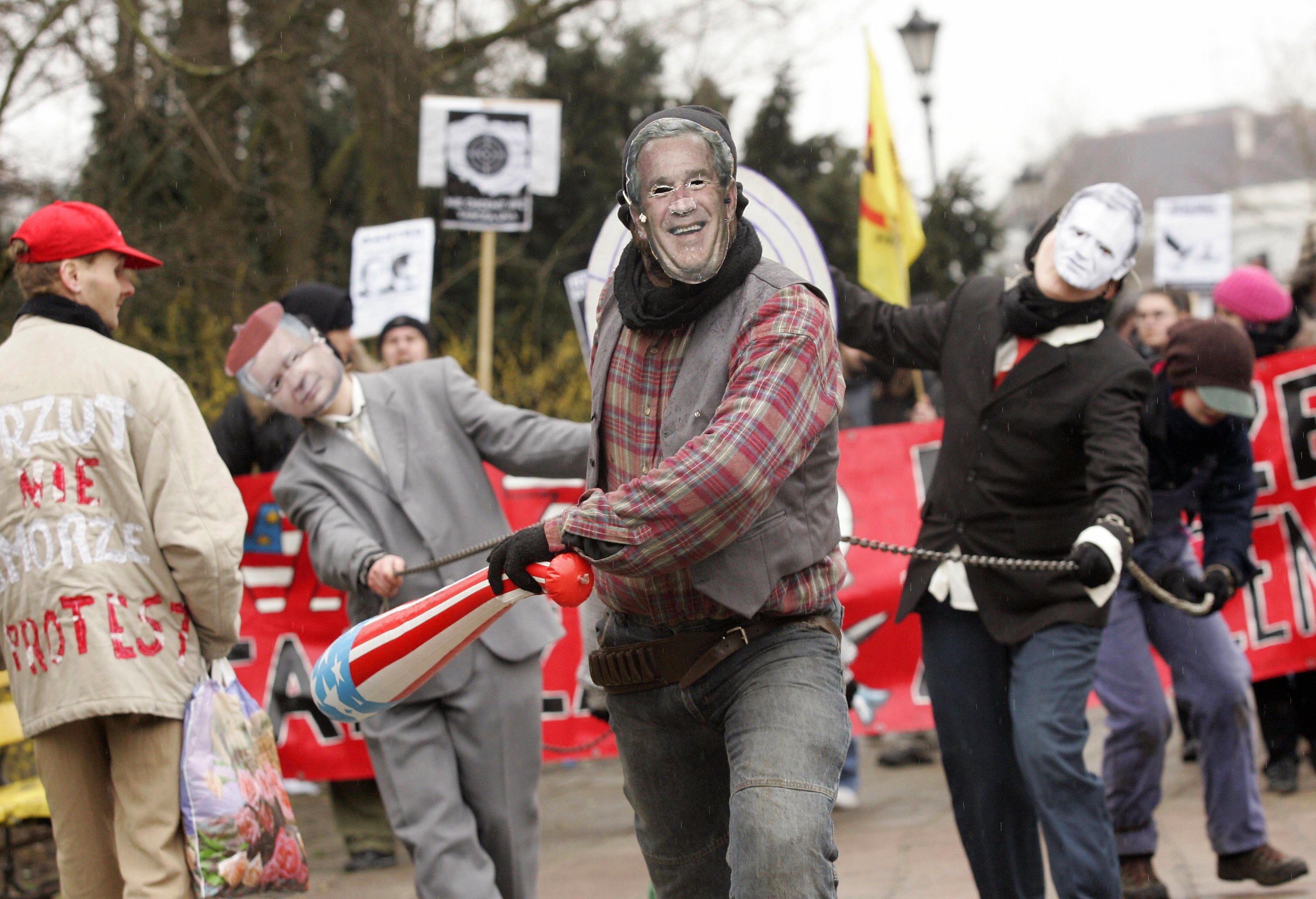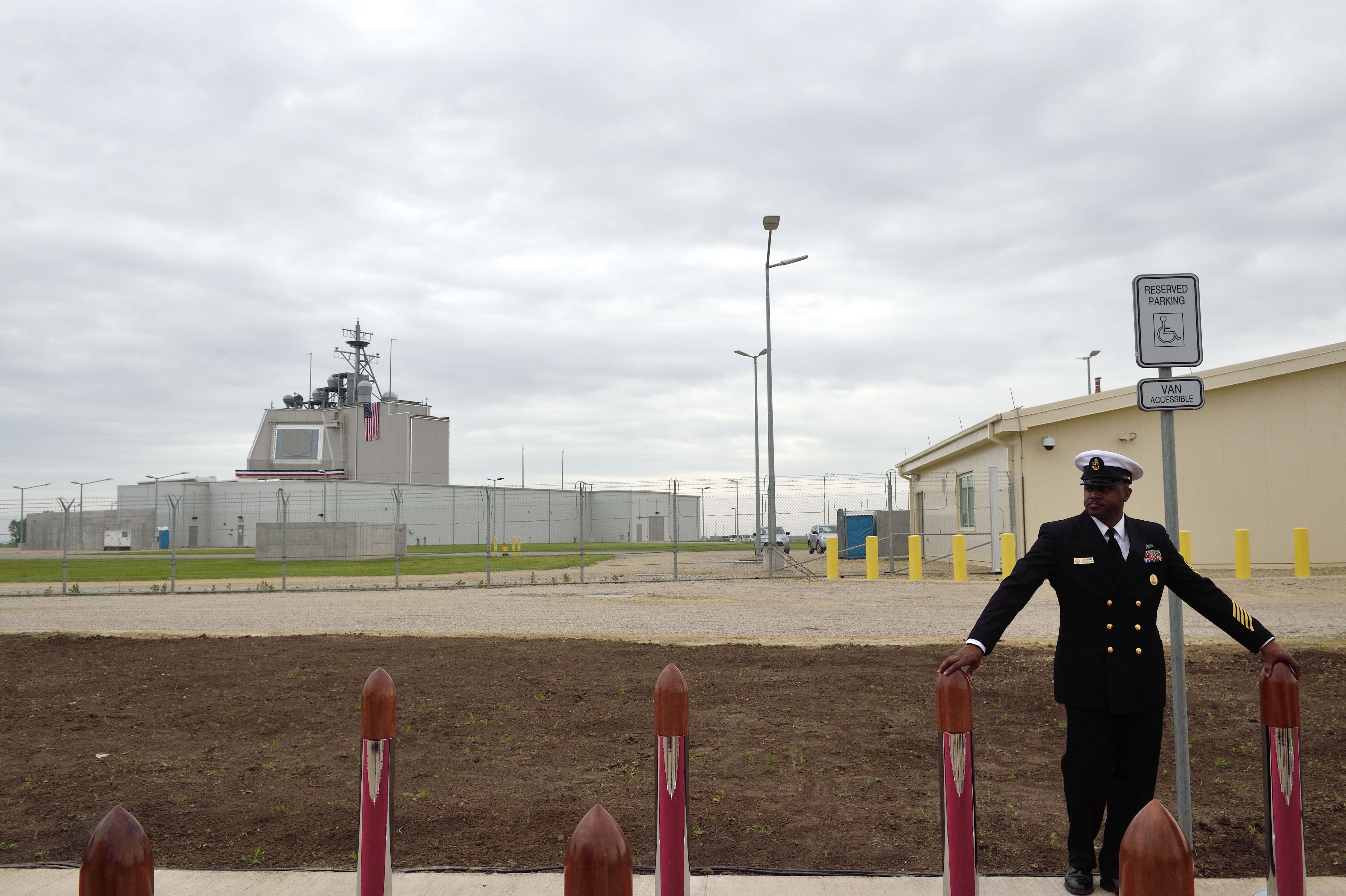This Polish village has become a potential target in the event of war
On the edge of a Polish forest is a US military installation, a place Putin sees as a Nato threat, writes Andrew Higgins

Your support helps us to tell the story
From reproductive rights to climate change to Big Tech, The Independent is on the ground when the story is developing. Whether it's investigating the financials of Elon Musk's pro-Trump PAC or producing our latest documentary, 'The A Word', which shines a light on the American women fighting for reproductive rights, we know how important it is to parse out the facts from the messaging.
At such a critical moment in US history, we need reporters on the ground. Your donation allows us to keep sending journalists to speak to both sides of the story.
The Independent is trusted by Americans across the entire political spectrum. And unlike many other quality news outlets, we choose not to lock Americans out of our reporting and analysis with paywalls. We believe quality journalism should be available to everyone, paid for by those who can afford it.
Your support makes all the difference.Tomasz Czescik, a Polish archaeologist and television journalist, walks his dog each morning through a forest near his home here on Nato’s eastern flank, wandering along the edge of a green chain-link fence topped with razor wire.
He enjoys the fresh air and morning quiet – until loudspeakers on the other side of the fence, strung with “Keep Out” signs in Polish, English, German and Russian, start blasting “The Star-Spangled Banner” at high volume.
“I don’t know anyone who has ever been inside there,” Czescik says, pointing across the fence toward a cluster of haze-shrouded buildings in the distance.
The fence is the outer perimeter, guarded by Polish soldiers, of a highly sensitive US military installation, expected to be operational this year, which Washington insists will help defend Europe and the United States from ballistic missiles fired by rogue states like Iran.
But for president Vladimir Putin of Russia, the military base in Poland, and another in Romania, are evidence of what he sees as the threat posed by Nato’s eastward expansion – and part of his justification for his military encirclement of Ukraine. The Pentagon describes the two sites as defensive and unrelated to Russia, but the Kremlin believes they could be used to shoot down Russian rockets or to fire offensive cruise missiles at Moscow.
As he threatens Ukraine, Putin has demanded that Nato reduce its military footprint in Eastern and Central Europe – which Washington and European leaders have flatly refused to do. Putin has been fuming about US missiles near Russia’s border since the Romanian site went into operation in 2016, but the Polish facility, located near the village of Redzikowo, is only about 100 miles from Russian territory and barely 800 miles from Moscow itself.
“Are we deploying missiles near the US border? No, we are not. It is the United States that has come to our home with its missiles and is already standing at our doorstep,” Putin said in December at his annual news conference.
Assumptions of a unified and peaceful Europe that took hold with the end of the Cold War are crumbling as Russian troops mass on the border with Ukraine
On Wednesday, the march to war in Ukraine slowed a bit as Russia announced further troop withdrawals after a weekend that saw Ukraine signal an apparent willingness to forgo its ambitions to join NATO, a critical issue in the current tensions with Moscow.
The Polish base, the heart of which is a system known as Aegis Ashore, contains sophisticated radars capable of tracking hostile missiles and guiding interceptor rockets to knock them out of the sky. It is also equipped with missile launchers known as MK 41s, which the Russians worry can be easily repurposed to fire offensive missiles such as the Tomahawk.
For villagers in Redzikowo, the idea that they are living at the forefront of Putin’s oft-stated security concerns has already caused jitters.
Ryszard Kwiatkowski, a civil engineer who works in construction, says a customer who reserved an apartment in a new block his company is building recently called to cancel her planned purchase because of worries that Russia could strike the missile defence facility at Redzikowo and send property values through the floor.

Nobody really thinks that is likely; it would put Russia into direct conflict with Nato, of which Poland has been a member since 1999. But assumptions of a unified and peaceful Europe that took hold with the end of the Cold War are crumbling as Russian troops mass on the border with Ukraine and the United States sends three thousand additional soldiers to Poland.
Kwiatkowski, who took part in protests against the US facility at Redzikowo when it was announced in 2016, says Russia had stoked unease by exaggerating the threat posed by Nato. But, he adds, both sides have created “a self-propelling machine of fear” fuelled by nerve-jangling uncertainty over what the other is up to.
Thomas Graham, who served as senior director for Russia on president George W Bush’s National Security Council, says Moscow had never believed Washington’s assurances that its missile defence system was aimed at Iran, not Russia. The issue, he adds, had become a powerful symbol for the Kremlin of a post-Cold War order that it views as dangerously one-sided and that it is now trying to revise through military threats.

“The current crisis is really much broader than Ukraine,” Graham says. “Ukraine is a leverage point, but it is more about Poland, Romania and the Baltics. The Russians think it is time to revise the post-Cold War settlement in Europe in their favour.”
In a meeting with Putin on Monday, Russia’s foreign minister, Sergey Lavrov emphasised that Russia wanted to see “radical changes in the sphere of European security” – far-reaching changes that go beyond just Ukraine to include a pullback of Nato troops now in Eastern Europe, limits on the deployment of offensive weaponry and restrictions on intermediate range missiles.
Tomasz Smura, director of research at the Casimir Pulaski Foundation, a Warsaw research group, says: “This is a huge issue for Russia.”
But shutting down the Redzikowo site, as Moscow wants, is a “red line” that the United States and Poland will not cross, he adds, although Nato, in response to a list of demands made by Moscow in December, recently offered discussion of an unspecified “transparency mechanism” in the hope of calming Russian concerns over the Polish and Romanian sites.
The Aegis Ashore site in Romania has been operating for five years without incident, but Russia views the Polish missile defence facility, previously delayed by construction and other problems, as a more serious menace.

The weapons system was installed last summer in the facility, which is scheduled to start working sometime this year, Rear Admiral Tom Druggan, the programme’s director, said in November. “It is specifically not focused on threats out of Russia, despite what they say,” he said.
The US’s assurances that only Iran need worry, however, were undermined during the Trump administration when the president stated that US missile defence systems would “detect and destroy any missile launched against the United States anywhere, anytime, anyplace.”
Washington has also struggled to convince Putin that its two missile defence sites in Eastern Europe do not also have an offensive capability that could easily be turned against Russian targets.
So far, only US military personnel have been allowed anywhere near the launchers or their control units. The US Navy, which operates the Aegis Ashore site in Poland, did not respond to a request for a visit.
Beata Jurys, the elected head of Redzikowo, says she had never been inside the facility, installed on the grounds of a former Polish air force base and a shuttered civilian airport, and does not follow technical arguments over what missiles can be fired from behind the fence near her house.
But no matter who is telling the truth, Jurys says, the finger-pointing by Moscow and Washington has made the village a potential target in the event of war.
“If something happens, we will be the first to know, unfortunately.”
This article originally appeared in The New York Times.




Join our commenting forum
Join thought-provoking conversations, follow other Independent readers and see their replies
Comments